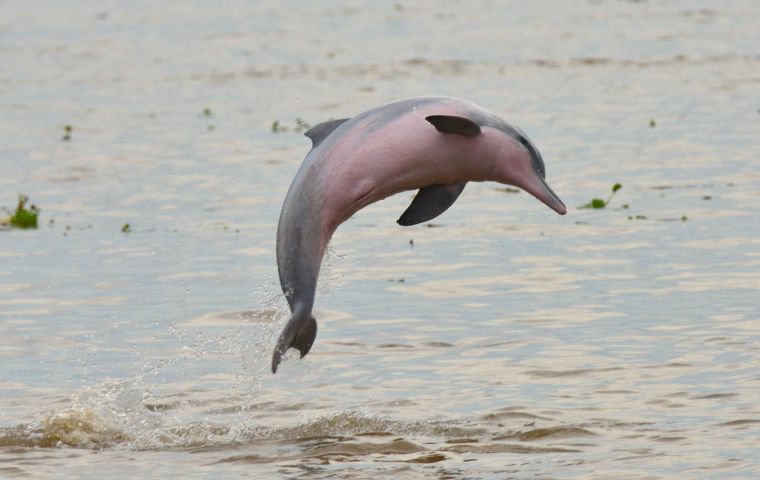MercoPress. South Atlantic News Agency
The “Last Shark” and the Amazon dolphin in the endangered species list
 The organization also moved an Amazon dolphin with a pinkish belly the Tucuxi to its endangered list, meaning that all of the world's freshwater dolphins are now threatened
The organization also moved an Amazon dolphin with a pinkish belly the Tucuxi to its endangered list, meaning that all of the world's freshwater dolphins are now threatened A shark only just formally discovered might already be extinct - a fate no shark has yet suffered in the human era - while an Amazon river dolphin has become endangered, a Red List of species in trouble showed on Thursday.
More than a quarter of the 128,918 animal, plant and fungi species assessed by the International Union for Conservation of Nature (IUCN) in its update are now threatened with extinction. The latest list has 31 new extinctions including several frogs and more than a dozen freshwater fish.
“This really shows that the world is under huge pressure,” Craig Hilton-Taylor, Red List Unit Head said. “The idea of the Red List is to try to draw attention to species and stop them from going extinct but sometimes the process goes too quickly.”
The so-called “Lost shark” of the heavily fished South China Sea was only formally discovered last year based on decades-old specimens. But there have been no recent sightings and it has not shown up in five targeted surveys, prompting IUCN to list it as ”Critically Endangered (Possibly Extinct)“.
Sharks have historically proven to be robust, surviving on the planet for hundreds of millions of years, even persisting through mass extinction events such as the asteroid strike believed to have wiped out most dinosaurs.
Dr. Will White, an Ichthyologist at CSIRO's Australian National Fish Collection who named the ”Lost shark“ said this might be the first shark extinction in human times.
”Unfortunately what makes a species a great survivor in the natural world doesn't equate to making them great survivors against man,“ White said.
The IUCN which works with thousands of scientists tends to be conservative on extinctions, since declaring them can spell an end to any remaining protection efforts. Thus, species it calls ”possibly extinct“ often already are.
The organization also moved an Amazon dolphin with a pinkish belly called the Tucuxi to its endangered list, meaning that all of the world's freshwater dolphins are now threatened since the others were already endangered.
Hazards include dams, pollution and gillnets - vast curtains of fishing nets that dangle in the current, it said.
IUCN described the decline in frog populations in Central and South America as ”drastic“. It cited a disease caused by the frog chytrid fungus which scientists link to climate change.
On a positive note, IUCN said that European bison populations had grown more than threefold since 2003 to 6,200 in 2019 thanks to conservation efforts and bumped it up one category to ”vulnerable“.
The bison were decimated by hungry armies in World War One in current-day Poland and Belarus, and vanished from the wild in the aftermath before being reintroduced.
Another success story is the Barndoor skate - a large, flat fish resembling a ray - that jumped three categories from ”endangered“ to ”least concern“.
”There are glimmers of hope, little stories that show us what can be done,“ said the IUCN's Hilton-Taylor. ”We know what to do, we know what species are threatened. It is just a question of ramping up efforts.”




Top Comments
Disclaimer & comment rulesCommenting for this story is now closed.
If you have a Facebook account, become a fan and comment on our Facebook Page!